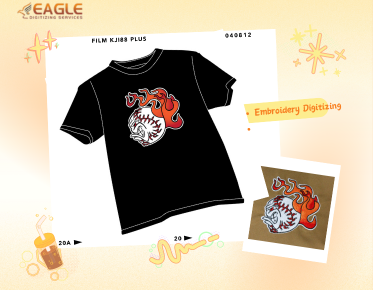Client Only Sent a Blurry Image? Here's How We Saved It with Vector Conversion
In the world of digital design, receiving a blurry image from a client can be a daunting challenge. However, with the right tools and techniques, such as vector conversion, even the most pixelated images can be transformed into crisp, scalable graphics. This blog explores the journey of converting a low-quality image into a high-quality vector graphic, ensuring that the final product meets the client's expectations and stands out in any medium.
Understanding the Challenge of Blurry Images
Blurry images are often the result of low resolution, which means there are not enough pixels to define the image clearly. This can happen for various reasons, such as using a low-quality camera, compressing the image too much, or simply enlarging a small image beyond its capacity. When a client sends such an image, it poses a significant challenge for designers who need to create high-quality prints or digital displays.
The Limitations of Raster Images
Raster images, such as JPEGs and PNGs, are made up of pixels. When these images are enlarged, the pixels become more visible, leading to a loss of clarity and detail. This is where vector graphics come into play. Unlike raster images, vector graphics are made up of paths defined by mathematical equations, allowing them to be scaled infinitely without losing quality.
The Power of Vector Conversion
Vector conversion is the process of transforming a raster image into a vector graphic. This involves tracing the image and converting its outlines and colors into paths. The result is a clean, scalable image that can be resized without any loss of quality. This process is particularly useful for logos, illustrations, and any design that requires precise lines and shapes.
Step-by-Step Vector Conversion Process
The vector conversion process begins with analyzing the blurry image to determine the best approach for tracing. This involves identifying key elements such as lines, shapes, and colors that need to be preserved. Once the analysis is complete, the designer uses vector software to trace the image, creating paths that replicate the original design. This step requires a keen eye for detail and a steady hand to ensure accuracy.
After tracing, the designer refines the paths, adjusting curves and angles to match the original image as closely as possible. This step is crucial for maintaining the integrity of the design and ensuring that the final vector graphic is a true representation of the original image.
Tools and Software for Vector Conversion
Several tools and software are available for vector conversion, each with its own set of features and capabilities. Popular options include Adobe Illustrator, CorelDRAW, and Inkscape. These programs offer a range of tools for tracing, editing, and refining vector graphics, making them essential for any designer working with vector images.
Choosing the Right Tool for the Job
When selecting a tool for vector conversion, it's important to consider the complexity of the image and the level of detail required. For simple designs, a basic vector software may suffice. However, for more complex images, a professional-grade program with advanced features may be necessary to achieve the desired results.
Real-World Applications of Vector Graphics
Vector graphics are used in a wide range of applications, from logo design and branding to web graphics and print media. Their scalability and versatility make them ideal for any project that requires high-quality visuals. Whether it's a business card, a billboard, or a website, vector graphics ensure that the design looks sharp and professional at any size.
Case Study: Transforming a Blurry Logo
One of the most common scenarios where vector conversion is used is in logo design. A client may provide a low-resolution logo that needs to be printed on various materials, from business cards to banners. By converting the logo into a vector graphic, designers can ensure that it looks crisp and clear, regardless of the size or medium.
In a recent project, we received a blurry logo from a client who needed it for a large-scale print. Using vector conversion, we were able to recreate the logo with precise lines and vibrant colors, resulting in a high-quality print that exceeded the client's expectations.
Challenges and Solutions in Vector Conversion
While vector conversion offers many benefits, it also comes with its own set of challenges. One of the main challenges is accurately tracing complex images with intricate details. This requires a high level of skill and expertise, as well as a deep understanding of vector software.
Overcoming Common Obstacles
To overcome these challenges, designers must be patient and meticulous in their approach. This involves taking the time to carefully trace each element of the image, making adjustments as needed to ensure accuracy. Additionally, designers can use advanced features in vector software, such as auto-tracing and path smoothing, to streamline the process and achieve better results.
The Future of Vector Graphics
As technology continues to evolve, so too does the field of vector graphics. New tools and techniques are constantly being developed, offering designers more options and greater flexibility in their work. From AI-powered tracing tools to cloud-based design platforms, the future of vector graphics is bright and full of possibilities.
For businesses and designers alike, staying up-to-date with the latest trends and technologies in vector graphics is essential for maintaining a competitive edge. By embracing new tools and techniques, they can continue to deliver high-quality designs that meet the ever-changing needs of their clients.
In conclusion, vector conversion is a powerful tool for transforming blurry images into high-quality vector graphics. By understanding the process and utilizing the right tools, designers can overcome the challenges of low-resolution images and deliver stunning results. For those looking to enhance their design capabilities, Eagle Digitizing excels in delivering professional vector art services, transforming creative visions into scalable designs.


.png)